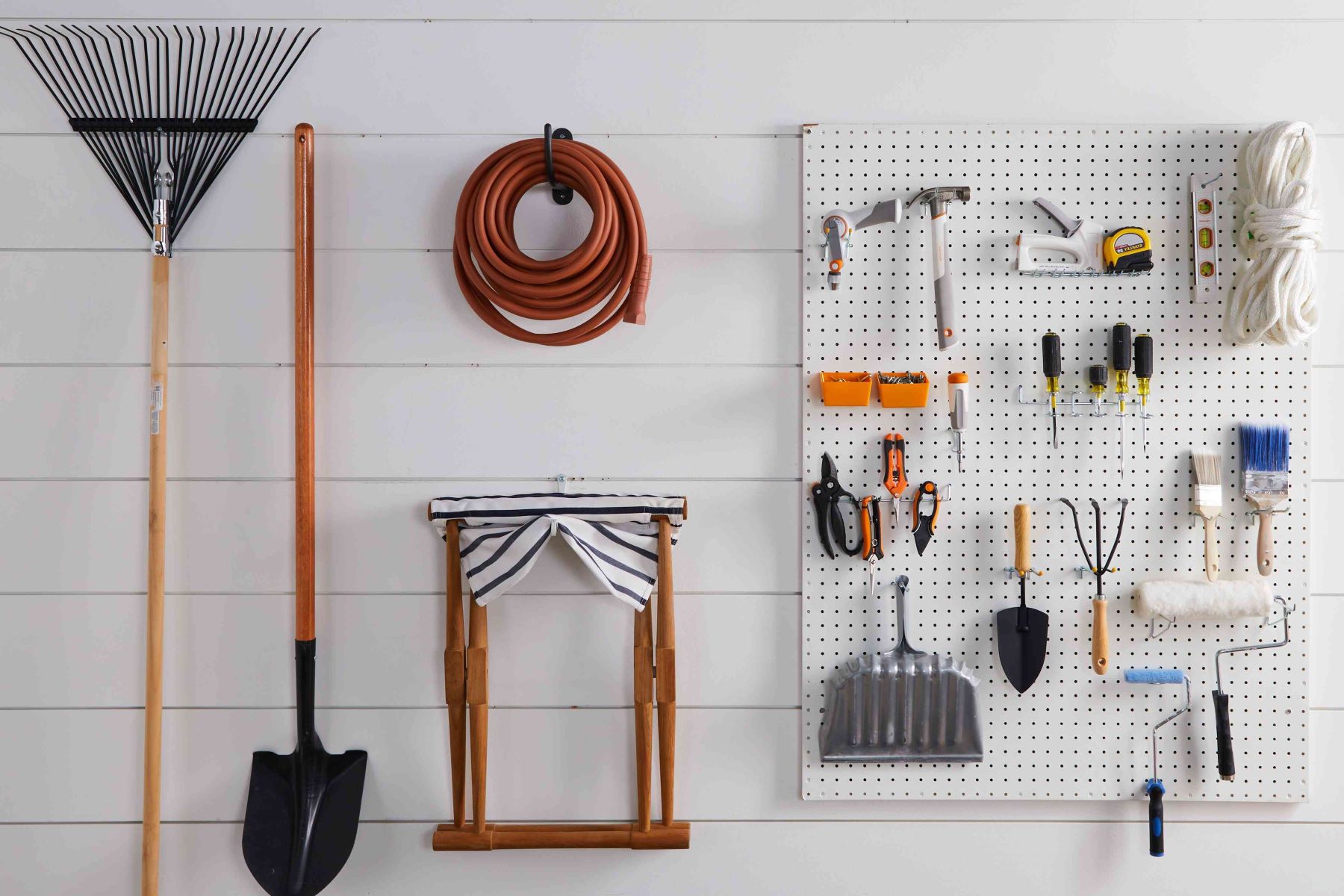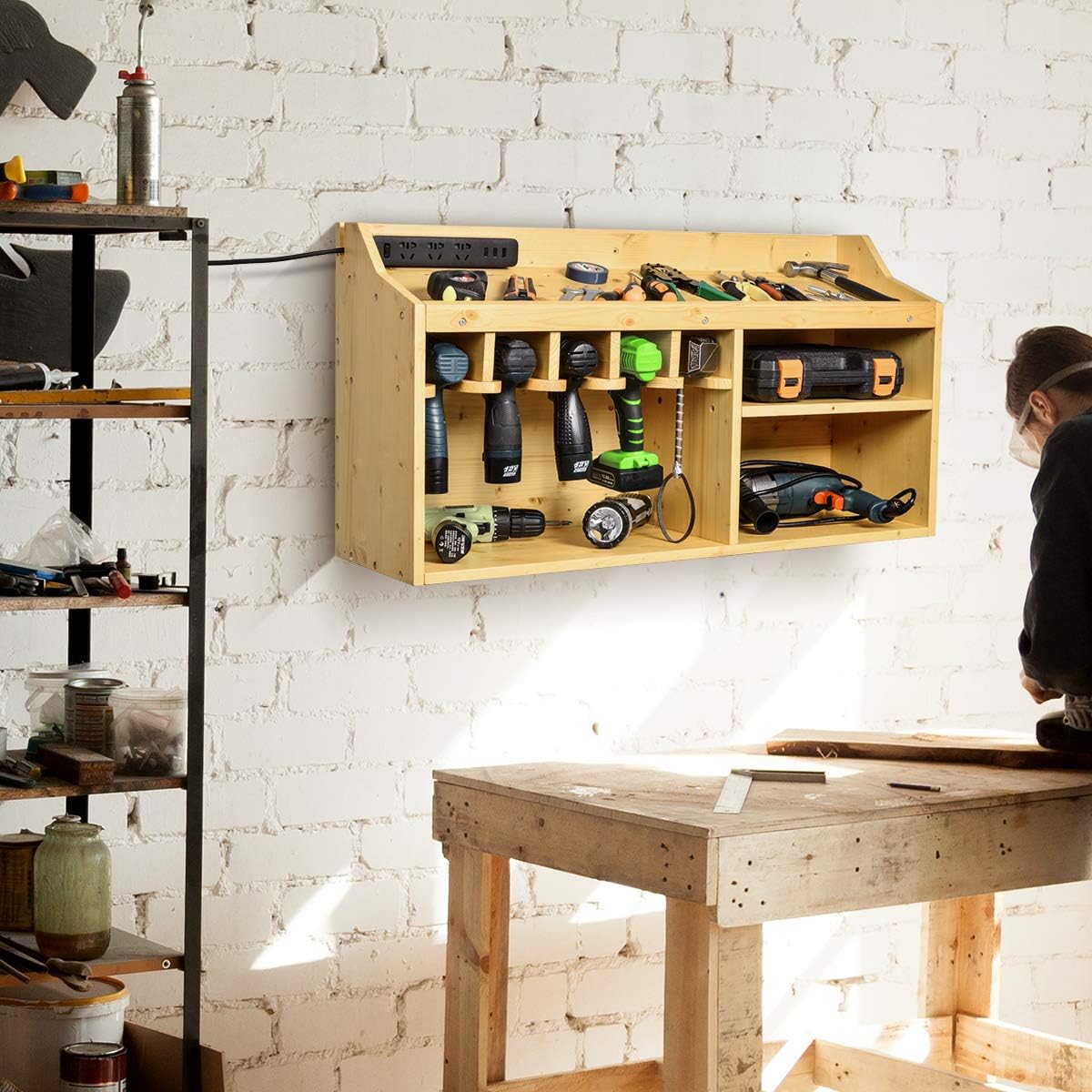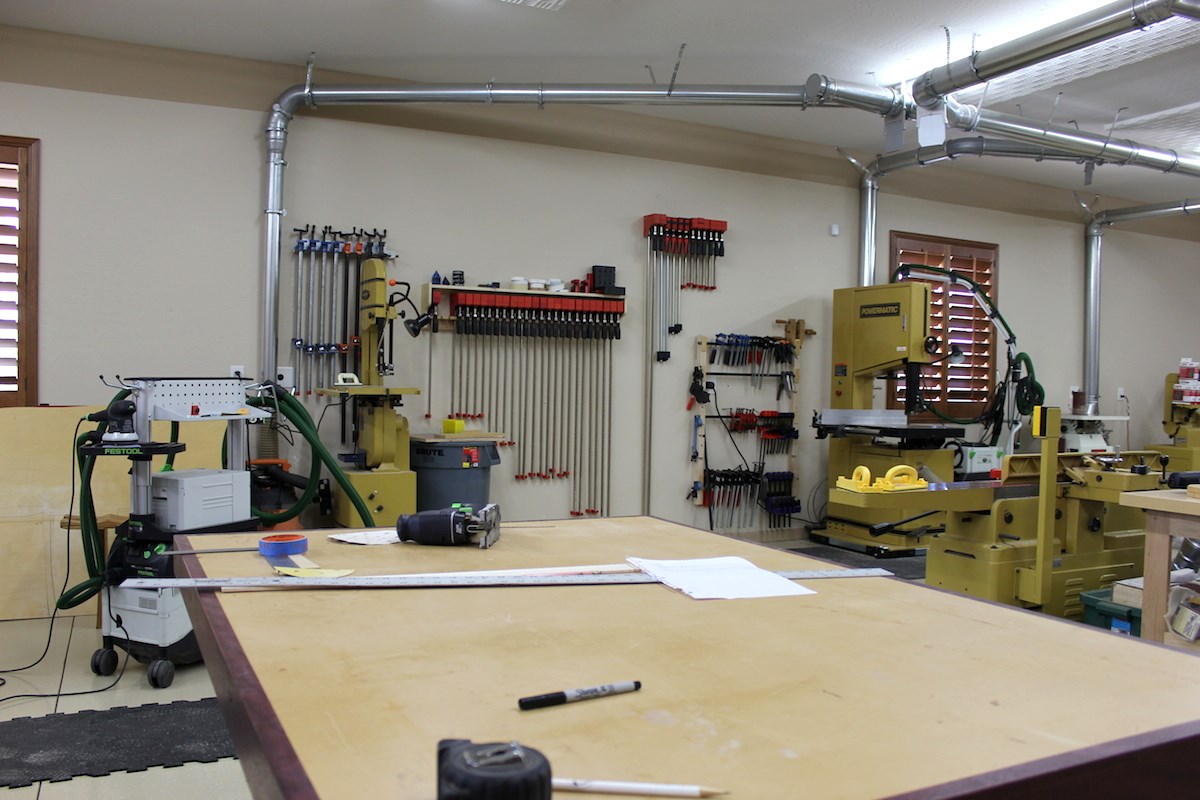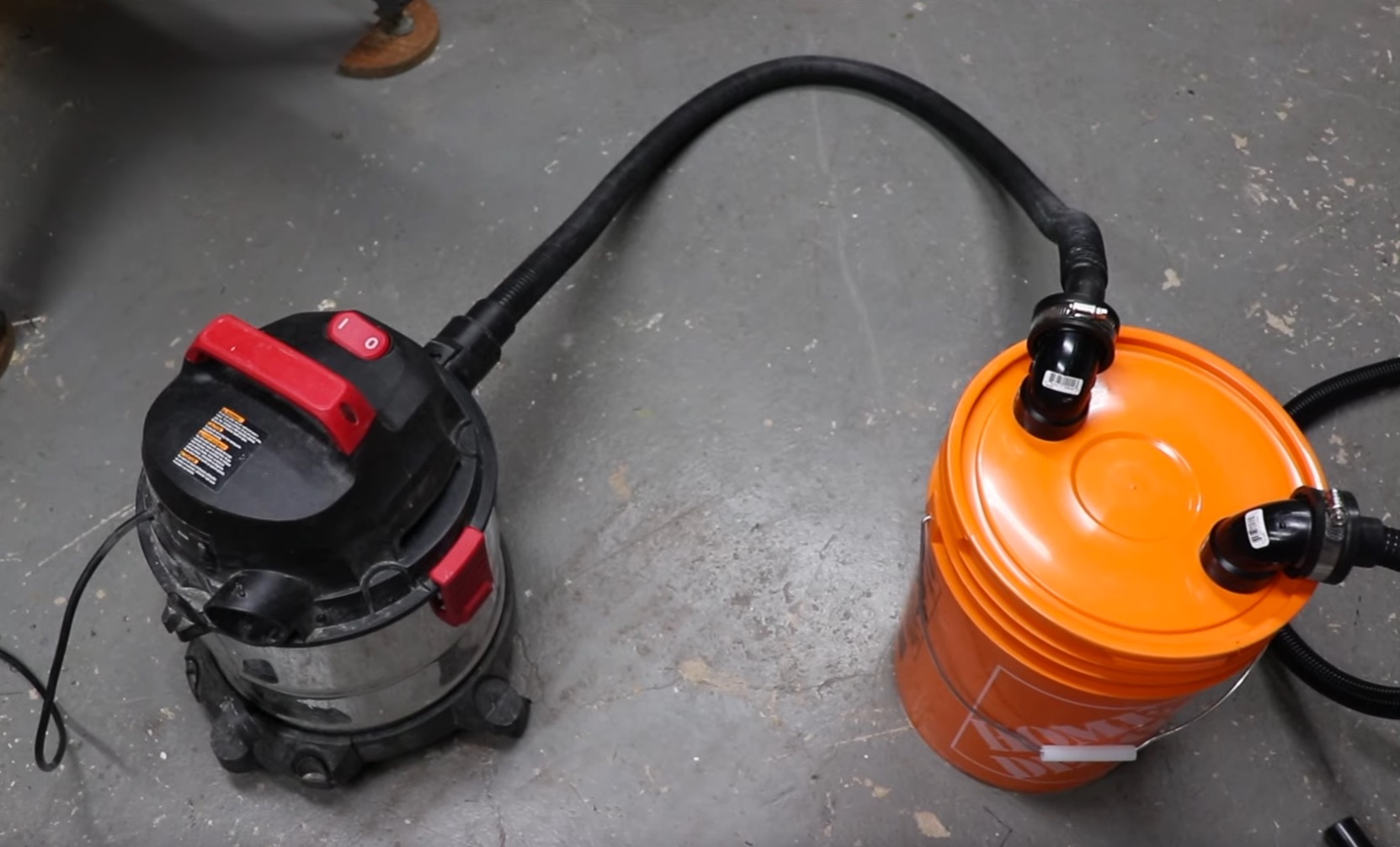Home>Renovation & DIY>Home Renovation Guides>How To Organize A Shop


Home Renovation Guides
How To Organize A Shop
Published: March 2, 2024
Discover expert tips and tricks for organizing your shop with our comprehensive home renovation guides. Streamline your space and maximize efficiency today!
(Many of the links in this article redirect to a specific reviewed product. Your purchase of these products through affiliate links helps to generate commission for Storables.com, at no extra cost. Learn more)
Introduction
Are you tired of walking into your shop and feeling overwhelmed by the clutter and disorganization? Do you struggle to find the tools and materials you need for your DIY projects? If so, you're not alone. Many DIY enthusiasts and home improvement professionals face the challenge of keeping their shops organized and efficient. In this article, we will explore practical tips and strategies to help you transform your shop into a well-organized and functional space. From setting up the layout to implementing storage solutions and establishing an inventory management system, we've got you covered. Let's dive in and learn how to organize a shop effectively.
Key Takeaways:
- Transform your shop into an organized space by zoning work areas, maximizing vertical storage, and creating a central workstation. This boosts productivity and makes DIY projects more enjoyable.
- Keep your shop organized by categorizing inventory, implementing efficient storage solutions, and establishing a cleaning schedule. This ensures easy access to tools and materials, leading to a safer and more efficient workspace.
Read more: How To Organize Shopping Bags
Setting Up Shop Layout
When it comes to organizing a shop, the layout plays a crucial role in maximizing efficiency and productivity. Here are some essential tips for setting up an effective shop layout:
-
Designate Work Zones: Divide your shop into specific work zones based on the type of tasks you perform. For example, create a designated area for woodworking, metalworking, painting, and assembly. This zoning approach helps in keeping tools and materials organized and easily accessible for each type of task.
-
Consider Workflow: Arrange the work zones in a way that follows the natural flow of your work processes. For instance, place the woodworking area near the lumber storage and the assembly area close to the finished product storage. This arrangement minimizes unnecessary movement and optimizes the workflow.
-
Maximize Space: Make the most of your shop's space by utilizing vertical storage options such as wall-mounted shelves, pegboards, and overhead racks. This frees up floor space and keeps frequently used tools within arm's reach.
-
Create a Central Workstation: Establish a central workstation where you can perform various tasks and have easy access to essential tools. This central area can also serve as a command center for managing projects and keeping track of inventory.
By carefully planning and implementing a well-thought-out shop layout, you can create an organized and efficient workspace that enhances your overall productivity and enjoyment of DIY projects.
Categorizing Inventory
Categorizing inventory is a fundamental step in organizing a shop. By grouping similar items together, you can streamline the process of locating and accessing the materials and tools you need for your projects. Here's how to effectively categorize your inventory:
-
Group Similar Items: Start by sorting your inventory into categories based on their type, size, and usage. For example, create separate categories for power tools, hand tools, fasteners, adhesives, safety equipment, and raw materials.
-
Labeling and Identification: Once you have established your inventory categories, use clear and descriptive labels to mark storage containers, shelves, and drawers. This makes it easy to identify and return items to their designated locations after use.
-
Storage Accessibility: Store frequently used items in easily accessible locations within your shop. This could include placing commonly used tools near the central workstation and keeping frequently accessed materials at waist or eye level for convenience.
-
Inventory Tracking System: Consider implementing an inventory tracking system, such as a spreadsheet or inventory management software, to keep track of stock levels, reorder points, and item locations. This helps prevent overstocking or running out of essential supplies.
By categorizing your inventory effectively, you can create a well-organized shop environment where items are easy to find, leading to increased efficiency and a more enjoyable DIY experience.
Implementing Storage Solutions
Implementing efficient storage solutions is essential for maintaining an organized and clutter-free shop environment. Here are some practical strategies for optimizing your storage space:
-
Utilize Vertical Space: Take advantage of wall-mounted shelves, pegboards, and overhead racks to maximize vertical storage. These options help free up valuable floor space and keep frequently used tools and materials easily accessible.
-
Invest in Modular Storage Systems: Consider investing in modular storage systems such as stackable bins, drawer cabinets, and tool chests. These systems allow for customizable configurations and efficient organization of small parts, hand tools, and accessories.
-
Opt for Clear Containers: When storing smaller items such as fasteners, hardware, and small tools, opt for clear containers. Clear containers allow for easy visibility of the contents, making it simple to locate specific items without the need to open multiple containers.
-
Utilize Under-Utilized Spaces: Make use of under-utilized spaces such as the back of doors, the insides of cabinet doors, and the area above windows for additional storage. Install hooks, racks, or hanging organizers to create storage opportunities in these areas.
-
Implement Mobile Storage: For larger tools and equipment, consider using mobile storage solutions such as rolling tool chests and utility carts. These mobile units provide flexibility and can be easily moved to different work areas as needed.
By implementing these storage solutions, you can effectively organize your shop, reduce clutter, and create a more efficient and productive workspace.
Use shelving and storage bins to keep items organized and easily accessible. Group similar items together and label shelves for quick identification.
Creating a Cleaning Schedule
Maintaining a clean and tidy shop is essential for a safe and efficient working environment. By creating a cleaning schedule, you can ensure that regular maintenance tasks are carried out to keep your shop organized and hazard-free. Here's how to establish an effective cleaning schedule for your shop:
-
Identify Cleaning Tasks: Begin by identifying the specific cleaning tasks that need to be performed regularly in your shop. This may include sweeping the floors, dusting surfaces, organizing workstations, cleaning tools and equipment, and disposing of waste materials.
-
Determine Frequency: Assess the cleaning needs of your shop and determine the frequency of each task. For example, sweeping the floors and dusting may need to be done daily, while deep cleaning and equipment maintenance can be scheduled on a weekly or monthly basis.
-
Assign Responsibilities: If you have a team working in the shop, clearly define and assign cleaning responsibilities to individuals. This ensures that everyone contributes to maintaining a clean and organized workspace.
-
Create a Cleaning Calendar: Develop a cleaning calendar that outlines the specific tasks to be completed each day, week, or month. Use visual aids such as charts or digital calendars to make the schedule easily accessible to everyone in the shop.
-
Set Aside Dedicated Time: Allocate dedicated time slots for cleaning activities, taking into account the shop's operational hours and peak times. This helps in integrating cleaning tasks seamlessly into the daily workflow without disrupting productivity.
-
Provide Cleaning Supplies: Ensure that the necessary cleaning supplies and equipment, such as brooms, mops, cleaning solutions, and protective gear, are readily available in the shop for use during scheduled cleaning sessions.
-
Monitor and Adjust: Regularly monitor the adherence to the cleaning schedule and make adjustments as needed based on the shop's evolving needs and feedback from the team. Flexibility is key to maintaining an effective cleaning routine.
By creating and adhering to a well-planned cleaning schedule, you can uphold a clean, organized, and safe shop environment, promoting a positive and productive atmosphere for all shop activities.
Read also: 14 Best Shop Storage For 2024
Establishing Inventory Management System
Establishing an effective inventory management system is crucial for maintaining control over the materials, tools, and supplies in your shop. By implementing a structured approach to inventory management, you can streamline operations, prevent stockouts, and ensure that the right items are readily available when needed. Here's how to establish an efficient inventory management system for your shop:
-
Inventory Assessment: Begin by conducting a comprehensive assessment of your current inventory. Take stock of all items, categorize them, and identify any excess or obsolete materials that need to be addressed.
-
Inventory Tracking Tools: Utilize inventory tracking tools such as barcode scanners, inventory management software, or simple spreadsheet templates to record and monitor the movement of items in and out of the shop. These tools provide visibility into stock levels and aid in identifying trends and patterns in material usage.
-
Standardized Item Identification: Implement a standardized system for identifying and labeling inventory items. Use clear and consistent labeling methods to ensure that items are easily recognizable and retrievable. This could include using item codes, descriptions, and storage location details.
-
Reorder Point Definition: Establish reorder points for essential items based on usage patterns and lead times. This ensures that you replenish stock before running out, preventing disruptions to ongoing projects.
-
Storage Organization: Organize storage areas in a logical and systematic manner. Group similar items together and allocate specific storage locations for different categories of inventory. This facilitates efficient retrieval and prevents time wastage searching for items.
-
Inventory Review and Adjustment: Regularly review inventory levels and make necessary adjustments based on demand fluctuations, seasonal variations, and project requirements. Conduct periodic physical inventory counts to reconcile actual stock levels with recorded quantities.
-
Supplier Management: Maintain clear communication with suppliers and vendors to ensure timely deliveries and accurate fulfillment of orders. Establishing reliable supplier relationships is essential for maintaining a consistent supply of materials.
-
Inventory Security Measures: Implement security measures to safeguard valuable inventory items. This may include installing locks, security cameras, and access control systems to prevent theft and unauthorized access to the shop's inventory.
By establishing a robust inventory management system, you can effectively monitor and control the flow of materials in your shop, leading to improved efficiency, cost savings, and a well-organized working environment.
Training Staff on Organization Techniques
Training your staff on organization techniques is essential for maintaining a consistently organized and efficient shop environment. By providing your team with the necessary knowledge and skills, you can ensure that everyone contributes to the overall organization and productivity of the shop. Here's how to effectively train your staff on organization techniques:
-
Educate on Shop Layout: Begin by educating your staff on the shop's layout and the designated work zones. Explain the purpose of each area and how it contributes to the overall workflow. Familiarizing the team with the layout helps them understand where specific tools and materials are located, minimizing time spent searching for items.
-
Demonstrate Storage Solutions: Provide hands-on demonstrations of the storage solutions implemented in the shop. Show your staff how to utilize vertical storage, modular storage systems, and clear containers effectively. Encourage them to practice proper storage techniques to maintain organization consistently.
-
Emphasize Inventory Categorization: Teach your staff the importance of categorizing inventory and how it contributes to efficient material management. Explain the rationale behind grouping similar items together and the benefits of clear labeling and storage accessibility. Encourage active participation in maintaining organized inventory categories.
-
Introduce Cleaning Procedures: Train your staff on the specific cleaning tasks and procedures outlined in the cleaning schedule. Demonstrate proper cleaning techniques, the use of cleaning supplies, and the importance of maintaining a clean and hazard-free workspace. Emphasize the role of each team member in contributing to a tidy shop environment.
-
Inventory Management Training: Provide training on the inventory management system in place, including the use of inventory tracking tools, standardized item identification, and reorder point definition. Ensure that your staff understands their role in maintaining accurate inventory records and the significance of regular inventory review and adjustment.
-
Safety and Compliance Education: Incorporate safety and compliance education into the organization training. Ensure that your staff is aware of safety protocols, equipment storage guidelines, and the importance of adhering to shop regulations. Promote a culture of safety and organization within the team.
-
Continuous Improvement Initiatives: Encourage ongoing learning and improvement by fostering a culture of continuous organization initiatives. Solicit feedback from your staff on organization techniques and provide opportunities for them to propose and implement improvements in shop organization.
By training your staff on organization techniques, you empower them to actively contribute to maintaining a well-organized shop environment. This not only enhances productivity and efficiency but also fosters a sense of ownership and pride in the workspace.
Maintaining Organization
Maintaining organization in your shop is an ongoing process that requires consistent effort and dedication. Once you have established an organized layout, efficient storage solutions, and effective inventory management, it is essential to implement practices that uphold the organization on a day-to-day basis. Here are key strategies for maintaining organization in your shop:
-
Regular Inspections: Conduct regular inspections of the shop to assess the overall organization and cleanliness. This proactive approach allows you to identify any areas that may need attention and address them promptly.
-
Daily Clean-Up Routine: Encourage a daily clean-up routine where all team members dedicate a few minutes at the end of each day to tidy up their work areas. This could include returning tools to their designated locations, disposing of waste materials, and ensuring that work surfaces are clear.
-
Adherence to Cleaning Schedule: Ensure that the established cleaning schedule is adhered to consistently. Monitor the completion of cleaning tasks and provide support to team members to maintain the cleanliness and organization of the shop.
-
Replenishment and Reorganization: Regularly replenish and reorganize inventory items to maintain order and prevent clutter. This includes returning items to their designated storage locations, restocking materials, and adjusting storage arrangements as needed.
-
Feedback and Communication: Encourage open communication among team members regarding organization practices. Solicit feedback on the effectiveness of current organization strategies and implement improvements based on the input received.
-
Continuous Training and Support: Provide ongoing training and support to your staff to reinforce organization techniques and best practices. Offer guidance and resources to help team members maintain a high standard of organization in their work areas.
-
Celebrate Organization Milestones: Recognize and celebrate achievements in maintaining organization within the shop. This could involve acknowledging individuals or teams that consistently uphold organization standards and contribute to a well-organized environment.
By consistently implementing these maintenance strategies, you can ensure that the organization becomes ingrained in the shop's culture, leading to sustained efficiency, productivity, and a positive working environment.
Frequently Asked Questions about How To Organize A Shop
Was this page helpful?
At Storables.com, we guarantee accurate and reliable information. Our content, validated by Expert Board Contributors, is crafted following stringent Editorial Policies. We're committed to providing you with well-researched, expert-backed insights for all your informational needs.















0 thoughts on “How To Organize A Shop”